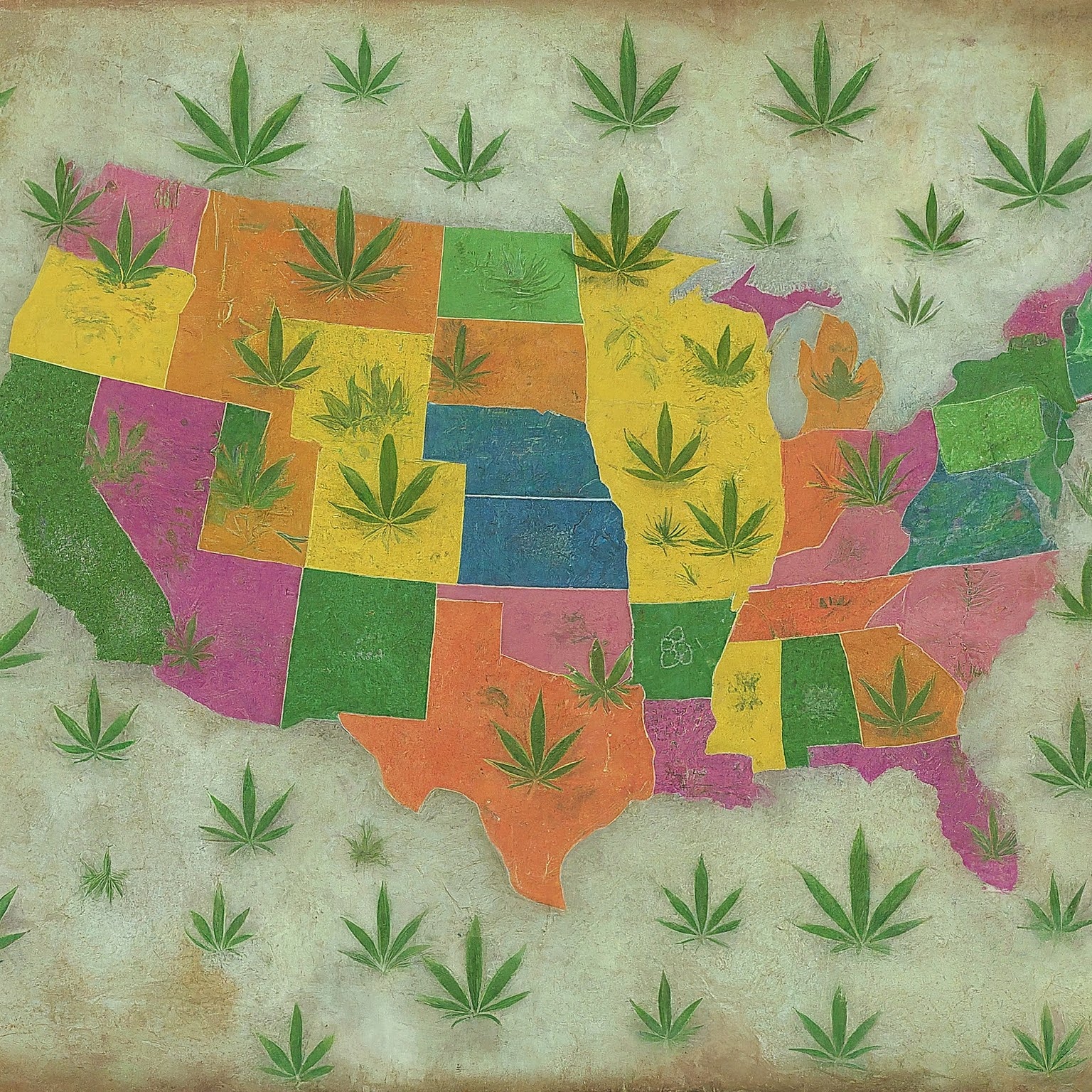Different states have varying cannabis laws. In some, this plant is completely legal, while in others, its use is strictly prohibited even for medical purposes. Therefore, when traveling or changing your place of residence, it is important to analyze the cannabis laws in detail, because ignorance of them does not exempt you from liability.
What are the basics of cannabis law in the United States?
This substance is classified as a Schedule I drug. It has the potential for abuse and is not recognized for medical treatment. Therefore, any product with more than 0.3% THC is illegal. However, in addition to federal law, there are also laws in particular states that have a completely different approach to marijuana.
The attitude to this plant and its products can be divided into three categories:
- Any use is strictly prohibited;
- It is allowed only for medical purposes;
- Can also be used for medical and recreational purposes.
In total, there are about 15,000 companies in the United States that have the right to sell not only cannabis autoflower seeds, such as Fast Buds, but also cannabis products. At the same time, it is not easy to obtain a permit from the state to run such a business, nor is it easy to comply with the requirements of the law, which change quite often.
A larger number of stores are spread across the West Coast and Northeast, as well as inland states such as Colorado, Oklahoma, and Michigan. However, California is the leader among all states. It has the most places where you can buy marijuana. In most cases, stores are located near the borders of states where this plant is prohibited, at a distance of about 20 miles.
In how many states is cannabis legal?
Marijuana is currently legalized in 24 states and the District of Columbia. In 38 states, it is possible to use this plant for medical treatment. Since marijuana laws vary from state to state, it’s worth looking at the quantitative indicators of cannabis legalization. This will help you see the overall picture of marijuana laws in the country.
After Washington and Colorado legalized cannabis in 2012, more than two dozen other states have passed similar laws. In another 14, marijuana is only allowed for medical purposes. Twelve states in America provide only limited access to cannabis. This applies to products that contain a small amount of psychoactive substance (THC) or no substance at all. At the same time, marijuana use is decriminalized in 27 states.
The overwhelming majority of Americans believe that cannabis products should be available for consumption to some extent. It is not surprising that marijuana is legalized in most US states.
The history of cannabis legislation
Marijuana has been grown for industrial use since the time of George Washington. In 1937, a tax on this plant was first introduced. As a result, the volume of its use in agriculture decreased significantly. In 1970, a law was passed that classified cannabis as a Schedule I drug, which made it difficult to legalize it but did not prevent it at all.
Marijuana was first allowed to be used for medical purposes in 1996. It happened in the state of California. However, recreational use of cannabis was legalized only about ten years later in Colorado and Washington. Since 2012, different states have begun to pass laws that control the use and cultivation of marijuana. In 2018, some cannabis products were exempted from the Controlled Substances Act. At the same time, the main proof of the recognition of the value of cannabis for treatment is that the Ministry of Health proposed to include it in Schedule 3 in August 2023. That is, to consider marijuana a controlled substance. This recommendation may have practical consequences already in 2024.
What do cannabis laws have in common?
Although marijuana laws vary from state to state, there are some commonalities. Only citizens over 21 years of age are allowed to use cannabis and its products for recreational purposes. At the same time, the amount of the substance that a person can buy or possess is strictly regulated. These restrictions can look different. They may relate to both the amount of the finished product that can be bought in specialty stores and the low level of THC (tetrahydrocannabinol) in it.
When it comes to growing a plant, there are restrictions on the number of bushes, their type, and distance to the nearest marijuana store. In some states, the amount of cannabis a resident of another state can buy is also limited. It is usually less than for locals.
As for the medicinal use of marijuana, the list of diseases for this may differ from state to state. It usually includes the following medical conditions:
- HIV;
- Cancer;
- Amyotrophic lateral sclerosis;
- Post-traumatic stress disorder;
- Other diseases for the treatment of which the doctor considers it reasonable to use cannabis.
US legislation on marijuana is quite varied. The laws differ both in terms of regulating the sale of cannabis and its use. At the same time, if we talk about federal legislation, the consumption of products with THC is prohibited, which does not prevent almost half of the states from partially legalizing this substance. In any case, the laws regarding cannabis should be analyzed in detail, especially if you are a fan of this plant and travel frequently.















